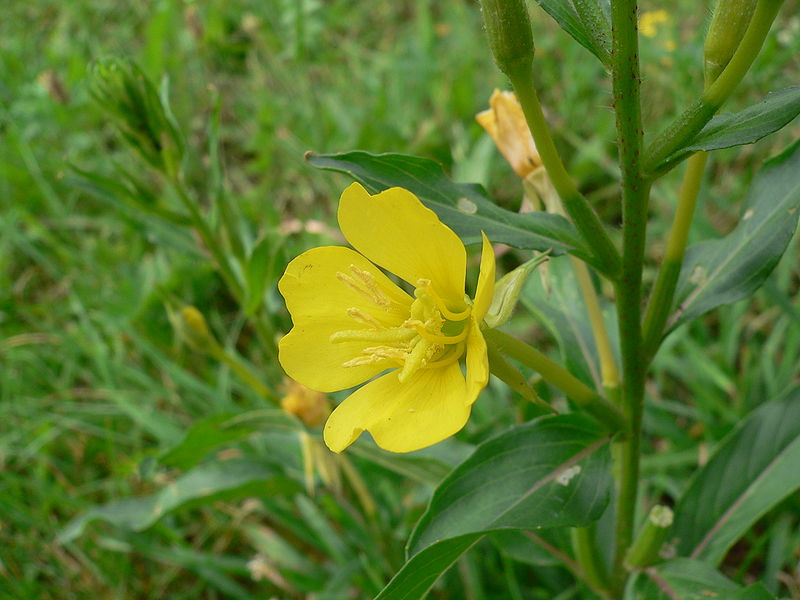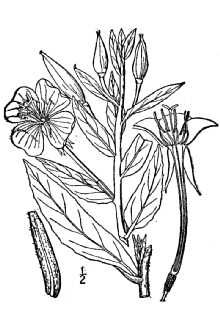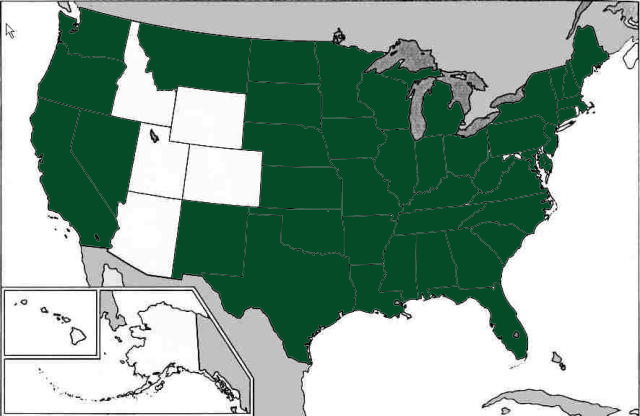Oenothera biennis
 |
 |
Wiki Commons, GNU |
Britton & Brown |
| Botanical name: | Oenothera biennis |
| Common name: | common evening primrose |
| Group: | dicot |
| Family: | Onagraceae |
| Growth type: | forb/herb |
| Duration: | biennial |
| Origin: | native |
| Plant height: | 1 - 6' |
| Foliage: | leaves alternate, narrowly oval or oblong, stalkless or short-stalk, wavy edged or slightly toothed |
| Flower: | yellow, on terminal spikes, 1-2", petals broad, usually indented on the tip |
| Flowering time: | June - September |
| Habitat: | roadsides, fields, weedy places |
| Range in New Jersey: | statewide |
| Heritage ranking, if any: | n/a |
| Distribution: |  |
| Misc. | Flowers partly close during the day, wide open at twilight. Moth pollinated as a result of nectar guides, which are ultraviolet patterns generally invisible to humans but visible to pollinators. Hummingbirds obtain nectar from the flowers, and the seed capsules are food for a variety of birds during the winter. Previously split into several varieties based on pubescence, as the pubescence on the stem and flowers varies, but now generally treated as one species. Cultural: The seeds contain gamma-linolenic acid which is sometimes used to reduce PMS symptoms, treat upset stomach, eczema, and for respiratory infections. Native cultures ate the boiled root. |